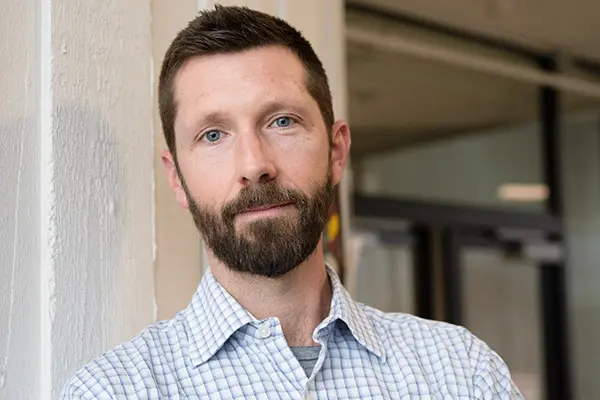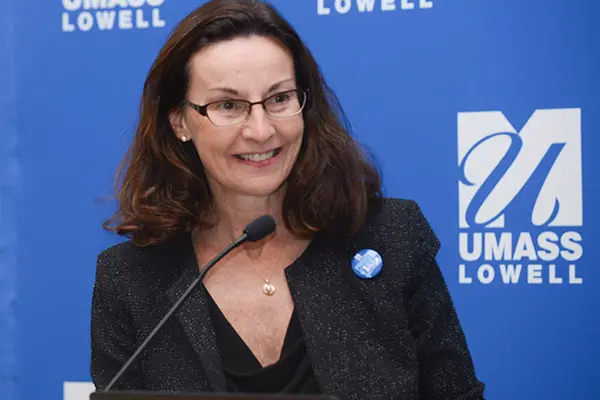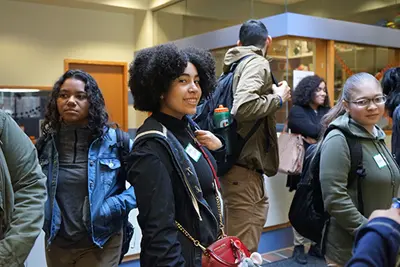Pandemic Pauses K-12 Testing and Colleges’ SAT and ACT Requirements
 Image by Tory Wesnofske
Image by Tory Wesnofske
07/07/2020
By Katharine Webster
As the COVID-19 pandemic disrupts standardized tests, educators have an opportunity to rethink the role of high-stakes testing in judging schools, students and college applicants, says Asst. Prof. of Education Jack Schneider, an education historian.
Schneider, who is director of research for a consortium of public K-12 schools that is piloting more holistic methods of assessment, says the pandemic has exacerbated inequities: As classes moved online, children in low-income homes and school districts suffered from a lack of access to computers, internet service, quiet places to study and other resources.
Yet the pause in testing and the rapid shift to online learning have a potential upside — especially if they lead to deeper conversations about those inequities, the role of standardized tests in perpetuating them, and what a good education looks like, Schneider says.
“Because standardized testing did not occur, state accountability systems are on pause — and the sky didn’t fall,” he says. “I think it has opened an opportunity for people to talk about what policy should look like.”
Notably, the requirement that high school students pass the Massachusetts Comprehensive Assessment System (MCAS) exam to graduate was waived this year, allowing about 1,000 students from across the Commonwealth to gain diplomas who otherwise wouldn’t have.
That’s important because students who fail the test are more likely to come from low-income communities, historically marginalized racial groups and resource-strapped public schools, Schneider says.
“There is a long history of efforts to try to compel students to work harder in school by threatening to withhold their diplomas from them,” he says. “But unless we’re going to give students an equal opportunity to pass those exams, then using them to deny diplomas is going to exacerbate inequality. We need to address systemic inequities before we make students bear that cost.”
Likewise, colleges’ and universities’ reliance on SAT and ACT scores has become a barrier to accessing a good college education for many students, especially low-income and first-generation college students who can’t afford test-prep classes — and who are also more likely to be students of color, says Lauren Turner, senior associate vice chancellor for Human Resources.
 Image by Tory Wesnofske
Image by Tory Wesnofske
Turner, who teaches two graduate classes in the College of Education, says research done by some early adopters of test-optional policies shows that students who don’t submit test scores but have strong grades, a high class rank and good essays do just as well in college as students who submit test scores.
“Education is the great equalizer, but the SAT is a barrier to access. It became this fiery hoop you had to jump through,” Turner says. “Some kids test well and some kids don’t test well, but the SAT is not an accurate indicator of intelligence or a student’s likelihood of success in college.”
UMass Lowell was the first public campus in New England to go test-optional, in 2015. While that decision hasn’t hurt the university's academic quality, other schools are reluctant to drop the testing requirement because the average SAT and ACT scores of admitted students play a significant role in the U.S. News and World Report rankings.
If too few students submit test scores, test-optional colleges can see their rankings drop. And until now, colleges that refused to consider test scores in admissions, known as “test-blind” schools, have been barred from the rankings altogether. In large part because of the COVID-19 pandemic, U.S. News announced in mid-June that it would start ranking test-blind institutions for the first time.
Before the pandemic, 20 percent of four-year colleges and universities in the U.S. were test-optional or test-blind, according to FairTest.org. But for this year’s high school graduates, more than half of four-year institutions, including top schools like Harvard University, have waived the requirement for SAT or ACT scores because the pandemic forced the cancellation of so many test dates, FairTest says.
Some top-ranked colleges aren’t looking back, including the University of California system, which voted to phase out the testing requirement altogether by 2025. Other schools that were already considering going test-optional may seize the opportunity to make the change permanent, too, Turner says.
The case is different for K-12 schools, which are required by law to conduct testing in order to receive funding from the U.S. Department of Education. This year, though, all 50 states received testing waivers because of the pandemic, Schneider says.
During that pause, he hopes that states and policymakers will take the opportunity to look at the outsize role of standardized testing in light of the racial justice movement and disparities in access to online learning — especially in the 11 states, including Massachusetts, that still have an exit test requirement for high school graduation.
Many states have dropped that requirement in recent years. But under the No Child Left Behind Act of 2002 and its successor, the Every Student Succeeds Act of 2015, all states must rate their schools based on student test scores, despite extensive and rigorous research showing that the chief predictors of performance on standardized tests are parental education, family income and race, he says.
“I think all testing should be low stakes, for students and for schools. Tests should be used for diagnostic purposes, not for making automatic determinations about consequences,” Schneider says.
The consequences in lower-income communities and urban districts, where most students of color go to school, can be particularly harsh, he says. Such schools are more likely to narrow the curriculum, “teaching to the test” in rote and disengaging ways for fear of being labeled “underperforming” — a label that, when applied, further stigmatizes those schools and their students.
But the pandemic’s closure of schools does have one silver lining, Schneider says.
“We’re seeing what an amazing job public schools do overall, despite their deficiencies, at helping young people learn and enriching their lives,” he says.
“Kids are missing the social interactions with their peers, the personal relationships with their teachers and the opportunity to work in a hands-on way. They’re missing sports, music and art. They’re missing a rich and diverse curriculum,” he says. “And parents are seeing how difficult it is to do the wide range of things that schools can do for young people. The pandemic is renewing parents’ appreciation for professional educators.”




